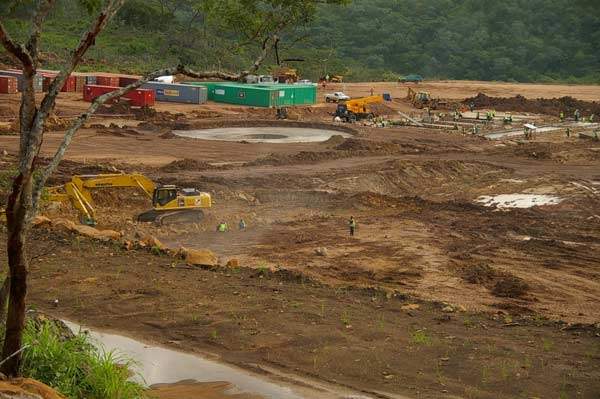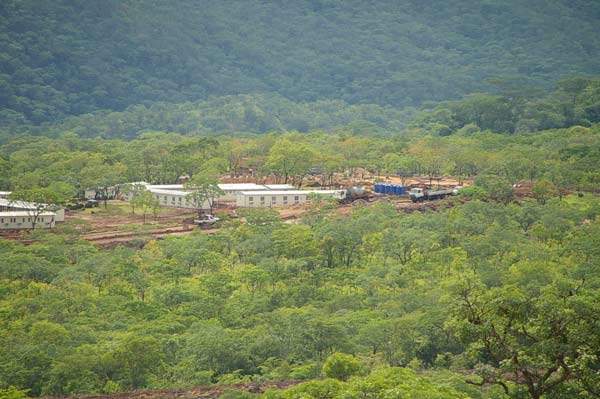The Kayelekera Uranium Deposit is located in Northern Malawi in Southern Africa. It is 8km south of the road connecting the townships of Chitipa and Karonga and is accessible via dirt road from Karonga, 40km to the west at the main north/south road of Malawi.
The deposit is covered by the Exclusive Prospecting Licence (EPL) 070 covering 157km². The project is held by Paladin Africa Ltd, a Malawi registered company and a wholly-owned subsidiary of Paladin Energy Ltd. Paladin is listed on the Australian Toronto stock exchanges.
The Malawi project has proven reserves of 2.8Mt of contained uranium oxide. It would be Paladin’s second-largest uranium mine and its second in Africa.
It has, however, met with several hurdles including delays to construction of the crucial Karonga-Chitipa road.
The road was initially funded by Taiwan, but Malawi has since severed ties with the island state in favour of China which has now promised to complete it.
Community opinion is also divided. The Malawian Government last year approved the mine, however progress has been slowed by court action by the Civil Society Organisations (CSO) which alleges poor environmental practices as well as corruption between the government and Paladin.
Under the terms of the agreement, the Malawian Government will receive a 15% free carried equity in the project. In return, Paladin will receive generous tax breaks while it has agreed to provide social infrastructure in the Kayelekera region, in particular schooling and health facilities.
The project began in 2007 at an estimated cost of $200m. Construction continued for two years including significant up gradation of local roads, earth works and related infrastructure.
Initial commissioning of the project took place in January 2009. In June 2009, the final commissioning began, following which all major process areas were introduced to the production ramp-up phase.
First production was achieved in April 2009. The nameplate capacity of the project remains on target and is scheduled for commissioning in early 2010.
Geology and reserves
The Malawi project has proven reserves of 3,943t of contained uranium oxide as of 2008.
The principal mineralised lenses that form the bulk of the orebody are hosted within distinct arkose units and occur up to a depth of 100m. The lenses are superimposed vertically along a trend lying approximately parallel to the synclinal axis of the fault-bounded structure.
In 2008 Paladin produced a new resource estimate on the Kayelekera Uranium Project under the JORC (2004) Code. This work produced the following resources at a 300ppm cut off grade:
3.42Mt of Measured resources graded at 1,211 ppm U308 containing 4141t U308
18.78Mt of Indicated resources graded at 725ppm U308 containing 13,616t U308
3.9Mt of Inferred resources graded at 552 ppm U308 containing 2,152t U308
In the final feasibility study conducted by Wright Engineering (Canada) in 1990, the total inferred resource is stated as 11,547t U308.
Mining
Since the completion of the Feasibility Study by CEGB and Wright Engineering in 1990, Paladin has initiated important changes it says would have a positive impact on the project.
These include:
- Improvements in the available infrastructure within Malawi and strong government support.
- Revision of the project concepts by Australian consulting engineers, with a view to incorporating better uranium processing strategies.
- Proposed utilisation of modern Australian development concepts to reduce capital requirements.
An external process engineering evaluation commissioned by Paladin introduced a significant change in the development concept for the project. Paladin stresses that this change of mining concept can be implemented within the framework of the existing environmental, resource and other data that was used for the original 1990 feasibility work.
The open cast mining began in June 2008. Initial blasting was carried out on 24 July 2008. To determine reserves for the first 18 months of mining, a grade control drilling program was undertaken. Nearly 13,000m of drilling was performed. Results revealed a strong correlation between the updated resource model and the one used in the Bankable Feasibility Study (BFS).
Ore processing
The mine’s design capacity is 3.3Mlb of U3O8. Facilities on site can process approximately 1.5Mt/y of sandstone and ore. Conventional methods including grinding, acid leaching, resin-in-pulp extraction, elution, precipitation and drying are adopted to produce the finished product.
Production and cost
The Board of Paladin approved the Bankable Feasibility Study (BFS) undertaken by GRD Minproc on 23 February 2007.
The BFS results indicated that a mine life of seven years and a processing life of 11 years were achievable from the existing resources. This gave a reserve of 10.46Mt at an average grade of 0.11% U308 for 11,377t U308. Based on an annual production rate of 1.5Mtpa and a 90% recovery the BFS shows that an average of 1,493t U308 will be produced for the first seven years from a feed grade of 0.109% U308 and 530tpa U308 over the last four years using accumulated marginal material grading
0.039% U308.
Total CAPEX is expected to be $185m and the project operating costs are expected to range from $19.5/lb for the first seven years to $23/lb over the life of the project.
These costs are inclusive of full on-site power generation for guaranteed availability and reliability. The BFS incorporates a flat real price for U308 of $60/lb over the entire 11-year period and the financial modelling undertaken indicates highly attractive returns can be achieved using defined ore reserves.
The future
The Kayelekera project has faced significant hurdles, namely from community opposition. The issue of the road linking Chitipa and Karonga clearly needs to be resolved now that China has taken over responsibility from Taiwan.
In early January 2007 it was reported that Paladin had set aside money for an environmental bond that could pay for any possible environmental damage caused by the Kayelekera mine. It is hoped that the fund may quell remaining opposition to the mine, namely the Civil Society Organisations (CSO) which summoned Paladin to court last year.





